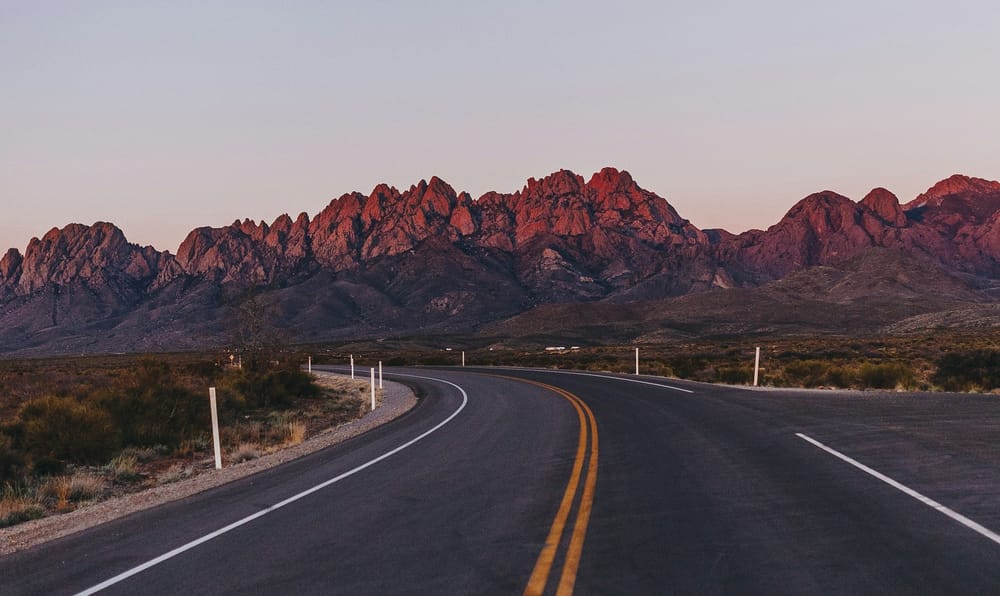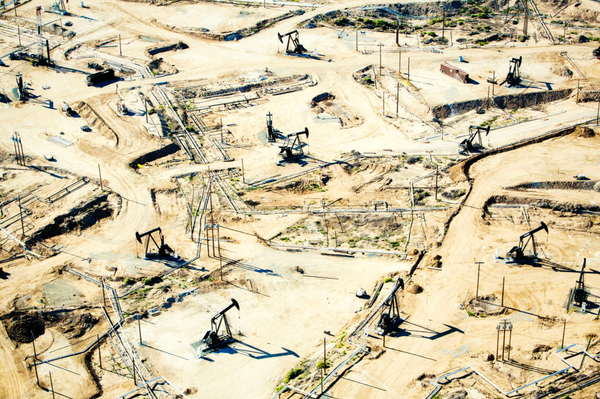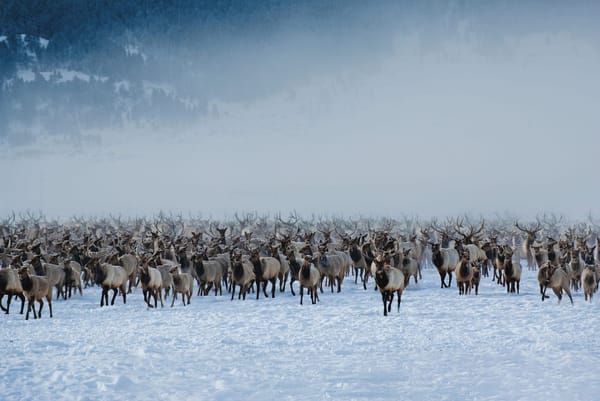The Great Conservation Vibe Shift
The same forces that recently made us fall back in love with public lands have been sidelined in Washington. Steve Pearce's nomination is the proof.
Looking back, one of the few silver linings of the Covid-19 pandemic was how quickly and tangibly it pushed conservation and outdoor recreation to the forefront of American consciousness. For several months, our country essentially shut down—businesses, churches, schools, offices, you name it. It was unsettling and disorienting, and Americans collectively turned to the great outdoors for refuge. An estimated 7.1 million more Americans participated in an outdoor activity in 2020 than in 2019, according to the Outdoor Industry Association. We flocked to public lands, and in doing so, we awakened to the fact that those lands included far more recreation opportunities than just national parks and national monuments.
Here in Santa Fe, New Mexico, the parking lots at nearby national forest trailheads that I once had to myself on early weekday mornings were suddenly overflowing. And it wasn’t just my longtime neighbors. Knowledge workers from Austin, San Francisco, and Chicago—suddenly untethered from their offices—began relocating to smaller western towns, places with fewer job opportunities but abundant recreation options thanks to the surrounding public lands. Towns like Bozeman, Tahoe, Carbondale, and Bend all saw a significant influx of new residents.
It was as if an enormous, collective mindset shift had taken place. Suddenly everyone seemed to have a new appreciation for the value of nature and the incredible resources we have in this country thanks to our legacy of public lands. A widespread desire followed—to spend more time outside, conserve our lands for future generations, and expand recreation opportunities.
The movement to create Outdoor Recreation offices, once largely a Western phenomenon, began spreading east. Maryland, New Hampshire, Pennsylvania, Arkansas, Minnesota, Massachusetts, and North Dakota all established "ORec" offices in the years immediately following the pandemic.
But perhaps no development better illustrates how these issues broke into the political mainstream than the passage of the Great American Outdoors Act. The bipartisan bill, championed by Senators Cory Gardner and Joe Manchin, permanently funded the Land and Water Conservation Fund and provided billions to address the maintenance backlog across national parks and public lands. It passed overwhelmingly—73 to 25 in the Senate—and polling in the summer of 2020 showed that 80 percent of voters supported it.
And here’s the kicker: President Trump, who began his term by downsizing national monuments and elevating energy dominance above all other public-lands priorities, signed the bill into law. That alone—his signature on a major bill passed in the middle of a presidential election year—shows how much the Covid shutdown had reshaped voters’ priorities and put our shared values into sharp relief for politicians.
So what the heck happened? Because now, as we face another kind of shutdown, it’s remarkable how starkly this one has again revealed the administration’s public-lands priorities—and how sharply they conflict with the values that propelled the Great American Outdoors Act across the finish line. It makes you wonder who the administration is listening to. Public opinion on land stewardship, privatization, and conservation hasn’t really shifted since the pandemic, but the Department of the Interior has nonetheless rolled out a string of anti-conservation, anti-stewardship decisions that could harm public lands and recreational access for decades. And yet another disheartening announcement came yesterday, when former New Mexico congressman Steve Pearce was nominated to lead the Bureau of Land Management.
As a proud New Mexico resident, I have plenty of thoughts about Pearce’s record on public lands—a record that largely speaks for itself. But first, let’s quickly recap the department’s recent actions since the shutdown began on October 1. It’s a remarkable record that underscores how far recreation and conservation have fallen down the priority list from their post-pandemic peak.
- Since October 1, national parks have remained open with skeleton staffs to watch over visitors. On one hand, this suggests the administration understands how immensely popular these parks are—and the political backlash that could come from closing them, especially in rural gateway communities that rely on tourism. On the other, it’s hard to argue that this approach reflects any concern for conservation. Most National Park Service employees have been furloughed, crippling the agency’s ability to manage visitors, and new reports of abuse and neglect in iconic parks are emerging daily.
- On October 20, the Interior Department announced plans to cut 2,000 employees, including more than 1,200 from the BLM, National Park Service, Fish and Wildlife Service, and U.S. Geological Survey. In response to a court order requiring the department to disclose its reduction-in-force plan, officials insisted the layoffs had “nothing to do with” the shutdown—signaling they intend to proceed as soon as it ends. Many of the targeted positions play critical roles in conservation work.
- The BLM has continued approving new oil and gas permits and leases on public lands. In addition to reopening the Arctic National Wildlife Refuge’s coastal plain for exploration, the bureau has issued more than 600 new permits since the shutdown began. While nearly all NPS employees remain furloughed, the BLM has kept enough staff on to ensure leasing continues. And just yesterday, the administration moved to fast-track drilling on hundreds of thousands of acres of federal land within ten miles of Chaco Culture National Historical Park—one of the Southwest’s most sacred Indigenous sites.
To sum up: record park visitation over the past decade has made clear the public’s demand for access, conservation, and more recreation access. The oil and gas industry, on the other hand, has shown little demand recently for new leases. So who exactly is the department catering to?
The administration has long made “energy dominance” its guiding principle for land management. Its plan to repeal the Public Lands Rule—a Biden-era policy that put conservation and recreation on equal footing with extractive industries in guiding BLM management plans—was a clear signal that oil and gas would now come first. The new leases drive that point home. And now, the nomination of Steve Pearce serves as the bullhorn.
Pearce served two nonconsecutive terms in Congress, from 2003 to 2009 and again from 2011 to 2019, representing New Mexico’s 2nd District. During that time, he was hardly a champion of public-lands stewardship. He sponsored bills to weaken the Antiquities Act, supported shrinking existing national monuments (including Bears Ears and Grand Staircase-Escalante), and opposed the designation of Organ Mountains–Desert Peaks National Monument—an area in his own district that offers world-class recreation.
Visitation to the monument has become a major economic driver for nearby Las Cruces, yet Pearce routinely described federal land management as a job killer that stifled the oil and gas industry. He championed increased leasing—whether close to home in New Mexico’s Permian Basin or in faraway places like Alaska’s Arctic National Wildlife Refuge, where he opposed new wilderness protections. Perhaps most damning, Pearce has repeatedly supported measures that would make it easier to sell off public lands.
This is the person the administration believes is best suited to manage the BLM’s 248 million acres of public land—our lands
Last week I wrote that the newly formed Senate Stewardship Caucus offered a glimmer of hope for better public-lands policy. I also wrote that it would take a real-world test to prove whether the caucus intends to lead or simply provide window dressing for bipartisanship.
Well, we may have that first test. When the shutdown ends, Pearce will go before the Senate Energy and Natural Resources Committee for his confirmation hearing. Four of the Stewardship Caucus’s eight members sit on that committee. So far, few committees have shown much interest in pushing back on Trump’s nominees. But if this caucus truly believes in sound, long-term stewardship, it can prove it—by locking arms and rejecting this choice.
Meet the Team

Julianna Abuzzahab, Social Media Manager
We're thrilled to welcome Julianna to our growing crew at RE:PUBLIC. Julianna earned her Masters of Science in Journalism at Columbia University last spring, and is now helping us build our social media presence (follow us now on LinkedIn, Facebook, and Instagram). She'll also be overseeing some ambitious upcoming editorial projects.
Favorite public land: Rib Mountain State Park in Wausau, Wisconsin
Why did you join RE:PUBLIC? Growing up in central Wisconsin, I developed a passion for protecting our outdoor spaces at a young age. When I came to Columbia to earn my Masters, I immediately gravitated to environmental reporting. That early connection to the outdoors shaped how I see the world and pushed me toward storytelling as a way to help others care about these places, too—which is why RE:PUBLIC is a perfect fit. It allows me to support the kind of meaningful reporting that truly matters.
How do you think journalism can protect public lands and waters? I think journalism creates meaningful conversations. When reporters dig into what's happening on the ground, it gives people a reason to pay attention. It creates questions, gets communities talking, and makes it more difficult for harmful decisions to go unnoticed.
The Good, the Bad, and the Ugly
Every Friday, our team shares critical stories about public lands from around the internet. This list could be exhaustive and exhausting, but our intent is to inform, not overwhelm. Instead, we choose three to five important stories you should be aware of—including at least one piece of good news.
The Good: Largest Working Ranch Donation in Montana History "Dale Veseth and his wife, Janet, have announced that they will gift their 38,300-acre ranch to the Ranchers Stewardship Alliance (RSA), a rancher-founded and rancher-led nonprofit Dale has helped build for more than 20 years. The gift, valued at $21.6 million, represents the largest recorded working ranch donation in Montana history. While the Veseths will continue to manage the ranch throughout their lives, this commitment ensures a thoughtful transition to RSA when the time comes." (Hat tip to my friend Ed Roberson, who writes one of my favorite newsletters, "Good News from the American West.")
The Bad: He Alone Tracked Leaky Oil Wells in National Parks. He Was Let Go. "Now it is unclear whether anyone will clean up an estimated 93 abandoned wells on federal lands managed by the Park Service. The wells are at high risk of spewing planet-warming gases into the atmosphere and contaminating groundwater, posing significant threats to the environment and public health. 'There’s nobody left in the national parks who can confidently oversee this work with the expertise that I have,' Mr. Smith, 40, said in an interview. 'I don’t think you could just pick somebody up and throw them in and expect them to do a really great job.'”
The Ugly: Trump administration considers revoking ban on oil and gas development near Chaco historical park "The UNESCO World Heritage site has been at the center of a fight over drilling for years, having spanned multiple presidential administrations. Within park boundaries are the towering remains of stone structures built centuries ago by the region’s first inhabitants, and ancient roads and related sites are scattered farther out across the desert plains and sandstone canyons. With the urging of some pueblo leaders, former President Joe Biden’s administration in 2023 issued an order banning new oil and gas development for two decades within 10 miles of the historic site in northwestern New Mexico."




